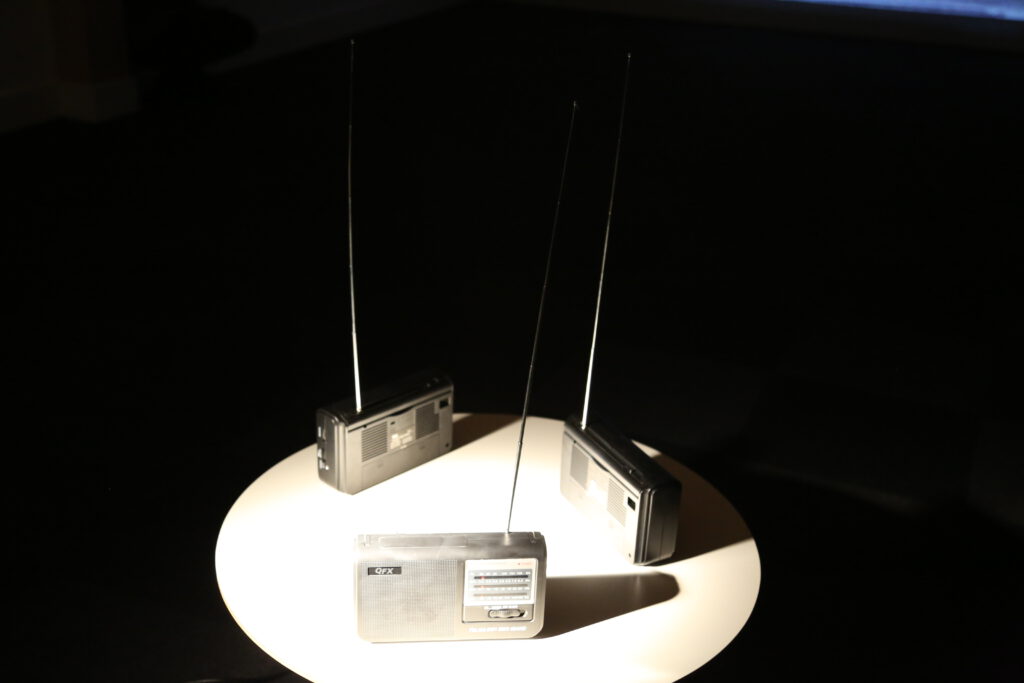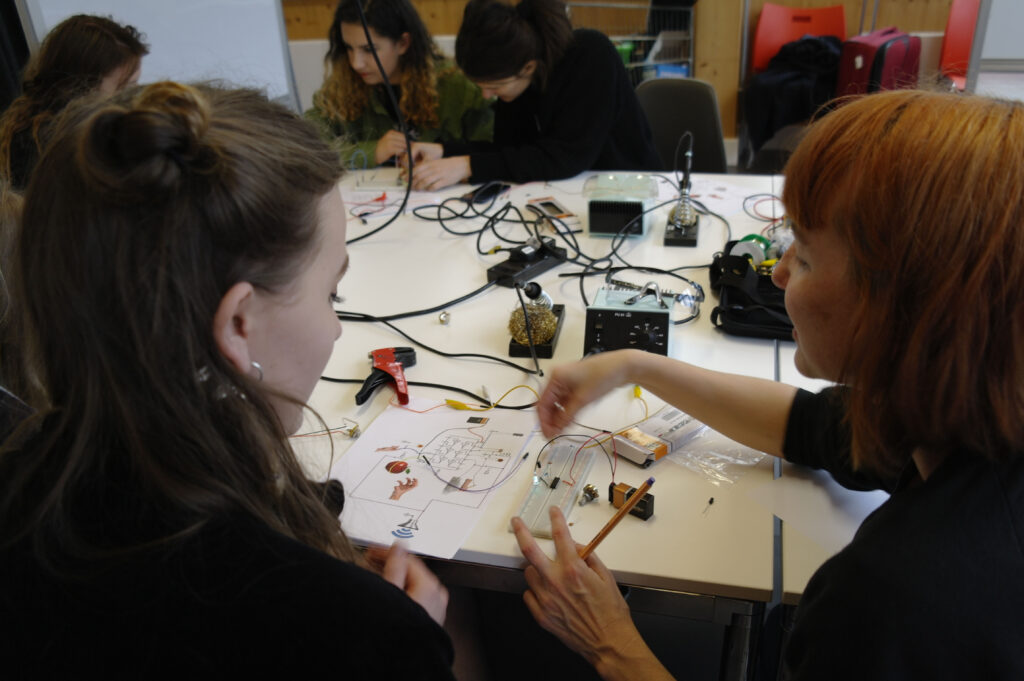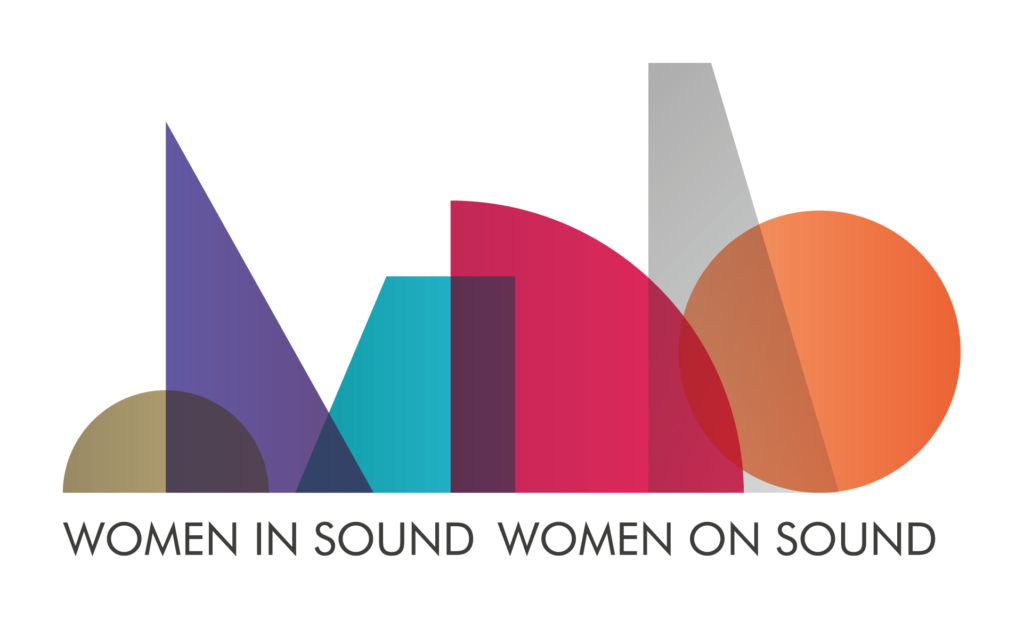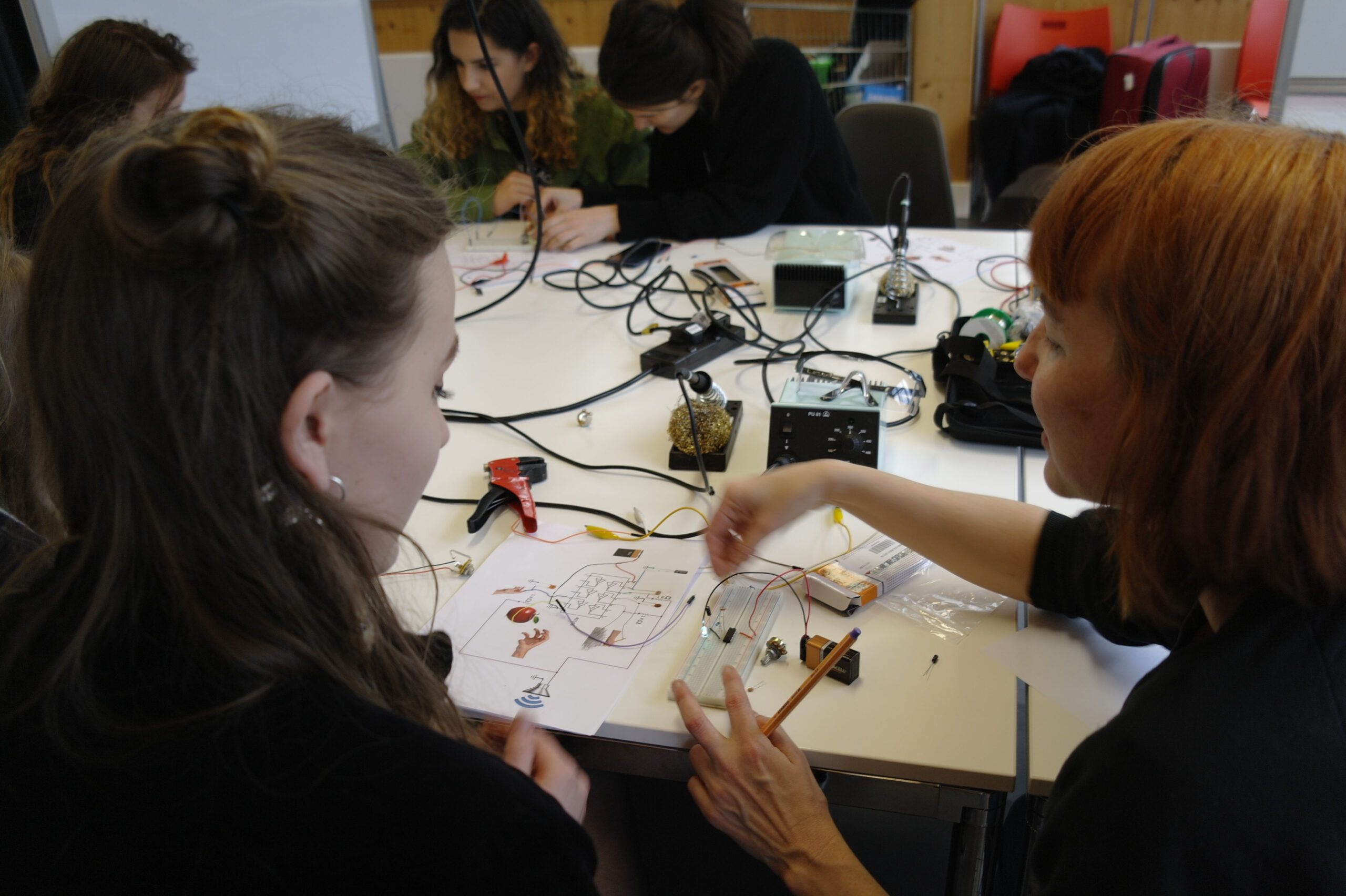#PressforProgress
Women in Sound Women on Sound (WISWOS) is an international hub of networks and individuals, including artists, researchers, technologists, musicians, archivists and everything in between, with an interest in sound, technology and education. WISWOS was established in 2015 at Lancaster University as a space to showcase women’s contributions to computer music (the use of computer technology to compose and perform music), the sonic arts and sound studies. Since then, the network has collaborated with people from across the world to try and find innovative new ways to bridge the industry’s gender gap.
Our goals begin with making visible women who work in the multitudinous areas of sound from music technology to sound art, sound and society, the politics of sound, and every area in between. We are doing this by creating event spaces for presenting workshops – symposiums – peer-to-peer networking opportunities and performance/exhibition opportunities. We also aim to explore how secondary school education shapes girls participation in the fields of music technology and the sonic arts. We have developed our Research in a Box Toolkit, Activating Women in Sound. We have built an online interactive space, which highlights women’s varied contributions to sound and music studies. The space helps you to locate the work of female authors both contemporary and historic in new and engaging ways. The space is also open to contributors; by going to the reading list submission page you can add an author to our list along with other resources of and about women in sound.
Learn more about the work of WISWOS here
WISWOS Call for Submissions
Our goals begin with making visible women who work in the multitudinous areas of sound from music technology to sound art, sound and society, the politics of sound, and every area in between. In support of this goal, we have built an online interactive space, which highlights women’s varied contributions to sound and music studies. The space helps you to locate the work of female authors both contemporary and historic in new and engaging ways. We would like your work to be on the WISWOS Reading List; by going to the Reading List submission page you can add your own work in these areas or the work of another author you would like to see on the reading list. Thank you for helping us to grow this list and please share this call.
Women in Sound Women on Sound:
Active Strategies to Address the Gender Imbalance in Sound, Music and Technology
by Diana Chester & Tony Doyle
Introduction
An article in Nature in 2016 gave statistical evidence that women rarely cite their own work, while men often cite themselves. This has the benefit of increasing their citation representations. By way of response, Dr. Linda O Keeffe (WISWOS Founder) decided to begin referencing her own work in her writings. She states,
“It seemed like a simple thing to do but I began to reflect on the reason behind why women don’t cite themselves. I wondered if it was a sense of thinking that the practice of self-citing would seem egotistical, or that we feel it is inappropriate, or worse women don’t feel that their own writings are worthy of citing.”
Essentially, if women “aren’t citing themselves, there’s a further visibility gap that comes from that” (Dockrill, 2016). This gap in visibility can have an impact on our ability to be promoted within academia and actively contributes to the misbelief that women do not contribute to fields of academic research. As a result, contributions by female authors lay dormant and often go unmentioned. Additionally, research has shown that young girls move away from the study of technology and the sciences in secondary school for reasons that include gender stereotyping and a lack of visibility of female role models working in these fields (Born and Devine, 2016).
In 2015, Women in Sound Women on Sound (WISWOS) organisation was established with the support of a number of individuals and organisations. Initially WISWOS’s goals were to create a space to showcase women’s contributions to the fields of sound and music in an attempt to debunk the myth that women do not contribute to these fields, and to find a way to make women working in these fields more visible within the education system, particularly secondary education. Toward this end WISWOS began two flagship projects: The first is Research in a Box: Activating Women in Sound, which is focussed on bringing music and technology to secondary school students. Secondly, the Reading List is an online interactive and searchable list of works by female authors working in the fields of sound, music, and technology.

Research in a Box: Activating Women in Sound
Research in a Box: Activating Women in Sound is a toolkit developed by Dr.’s Linda O Keeffe and Rebecca Collins through funding from Lancaster University in the UK. They researched the idea of developing a toolkit for teachers, one which contained information, resources, and physical materials, sourced from female-identified sound and music makers and academics. Through their research they learned about how technology and tools can be non-inclusive in their design, resulting in the exclusion of certain user groups, both implicitly and explicitly. In feminist theories of technology, researchers have pinpointed the stage at which certain technologies begin with a ‘script’ (Woolgar, 1991) that designers, whether intentional or otherwise, build into the framework of designs. These scripts, as Born and Devine (2016) state, presume a type of end user and/or universal user—ignoring the potential diversity of users. Wyatt argues that users and non-users of technology are then expected to conform or adjust to the design of all technological objects and systems (2003).
The purpose of the Research in a Box kit is to allow teachers access to materials created and developed by women, bypassing the potential exclusionary nature of materials not explicitly designed for certain user groups. Cockburn argues that when young women are given access to the ‘know-how’ of technology they will have the potential to experience a “source of social and political power”. Equally when young people, boys and girls witness women in the role of expert in a field, it highlights the potential of any gender to succeed in this field. The Research in a Box: Activating Women in Sound toolkit is rooted in the work of women who contribute to the theoretical and practical aspects of sound studies. Unless one is searching through feminist scholarly journals, there is often no search engine which allows you, within journals, to identify or search for authors by gender. This may be one of the reasons why few (if any) publications used by teachers and academics in music technology education are by women authors. The second initiative highlighted here, The Reading List, is intended to respond to this exact challenge of accessing the work of female authors in the field of sound and music studies.
The WISWOS Reading List developed by Dr. Tony Doyle, Dr. Diana Chester and Joanna Helms is designed to provide resources for educators, students, academics, and anyone with an interest in sound. It provides access to materials by women composers, sound makers, academic scholars and artists, and is a dynamic database of publications by women on sound, technology, music and technology, sound studies, including a variety of disciplinary information in the field of sound. As mentioned in the introduction, women scholars don’t often cite themselves and are often not cited by male scholars, particularly in technological and scientific fields. This makes it increasingly difficult to source female scholars directly from publications and in some cases to find their work at all.
The design and development of the reading list was accompanied by many conversations about the gendered nature of technology and web development. The main focus of discussion revolved around how to create spaces of knowledge that cater to the intended audience of the site. The aim of the reading list is to create a resource that helps people draw connections and uncover new and existing knowledge related to women’s practice and writing on sound. Sound is defined broadly, as music, noise, environmental sound, sonic ecology, ritual sounds, storytelling, oral history, theoretical and practical, or personal, and beyond.
In order to reach the aims of inclusivity for the reading list, a good deal of time was spent on how to create an inclusive list of metadata tags that would allow for ease of searchability. The process started with 27 metadata tags, and through contributor selection, and the addition of tag categories, the reading list now boasts over 50 different categories which users can search. These range from Music, Mobile Sound, Feminism, Noise, and Interfaces for Music/Sound, to Temporality, Listening, New Sound, and Composition. The list is malleable to the ever-expanding contributions of women to these fields, and the aim is for the site to continue to be responsive and grow in this way.
The WISWOS Reading List forms part of the Research in a Box: Activating Women in Sound toolkit as it provides further resources for students and educators, who are the focus of this initiative. As a result, educators and students were included as a part of the target audience. Other groups considered to be the target audience include scholars, writers, composers, musicians and academics as well as anyone who might be involved in the design of educational courses. It is hoped that those using the reading list will make use of the information available to represent a more inclusive cross section of people and information in the field. Conversations about potential site visitors between Doyle, Helms and Chester informed decisions about the presentation style of data gathered on the site and the impact they might have on the intended audience.
The site design allows users to access the reading list information in four different views; a searchable table, a timeline, a node tree, and a geo map. The first view, the ‘Searchable Table’ provides users the ability to search for papers by subject, author location or keywords associated with a written submission. The search results can also be printed and/or saved as a pdf for later reference. The second view is a ‘Timeline’ that provides an historic overview of important books and authors in the field of sound and music technology. This is a more visually engaging experience as it provides an easily navigable view of the timeline that one can click through, or navigate the viewable timeline and thumbnail images of book covers that are themselves clickable and hyperlinked. The third method of exploring the reading list involves a ‘Node Tree,’ that allows users to see related works by subject area. The fourth and final method of exploration is the ‘Geo Map’ which at a glance allows for a visualisation of the geographical origins of paper submissions. The aim of this view was to encourage submissions by authors from locations that are not being currently represented on the map, and to help WISWOS identify where greater outreach may need to be focussed. This is a key feature of the reading list as we want to highlight both where works originate and evidence the gaps in our data. A quick view of the geo map today would show distinctive gaps that may be a result of a western centric system of education in sound and music technology, or may highlight where women are more absent from these fields for a variety of reasons which could include social, economic or cultural factors.
The four viewing options represent visual information differently and aim to be inclusive of a multitude of learning styles. For example, the timeline serves as a way to contextualize the mission behind the project, by providing a chronological context for the representation of women’s work in these fields. Of course, doing so makes clear a large gap in representation, with more women’s work becoming available from the 1990’s forward, and very few publications in the field from the 1930’s through to the 1990’s. The four views also allow the presentation and acknowledgement of multiple genres of work by the same person and links female academic scholarship in sound and music to practice based outputs. An example of this is the placement of Daphne Oram in several key spaces on the website, to highlight her professional, academic and practice-based achievements.
The goal of the WISWOS Reading List is to allow educators access to a variety of authors in areas suitable for the purpose of teaching music and sound technology, and to provide a balanced contribution of ideas and analysis. It is the hope of WISWOS that educators who have a wide pool of written resources will cite both female and male identified contributors. One can only speculate what impact this may have on students, but as in most feminist scholarly efforts we seek a number of goals in the development of our reading list, namely to restore women to the histories of technology, to allow women writers to develop a ‘critical mass’, and to strive for gender equity in teaching and professional practice.

Conclusion
As Sara Ahmed points out in Living a Feminist Life, ‘Citation is feminist memory’ (2017, 10), and it is important to pay attention to the voices we use to frame our work and our thinking. If something is not easy to find, it rarely means it does not exist, it just means we have to look harder for it. Through the work of WISWOS we know there are thousands of women working, making, writing and practicing within sound and music technology. We need to support the circulation of this material so that referencing the work of women becomes a daily habit rather than a rare occurrence.
The evidence that we continue to live in a society full of inequality and sexism is unavoidable. The past year has seen a plethora of social media based campaigns that seek to highlight the ongoing issues that we face. Education as a site for pedagogical intervention cannot be neglected or overlooked, particularly as art-related subjects continue to be squeezed out of the curricula. Experience and current research tells us that is it difficult to imagine a career in a subject area such as music technology when role models are missing or under-represented. Pathways and interest become useful tools to draw lines of flight that can be followed or etched more deeply into the landscape. Drawing these paths is hard work, as it is always easier to follow more established trajectories.

Research in a Box (RIB): http://wiswos.com/rib
Reading List of Women in and on Sound: http://wiswos.com/readinglist
Check out Our Video Tutorials: http://wiswos.com/tutorials
Add Your Work to the Reading List: http://wiswos.com/submit
